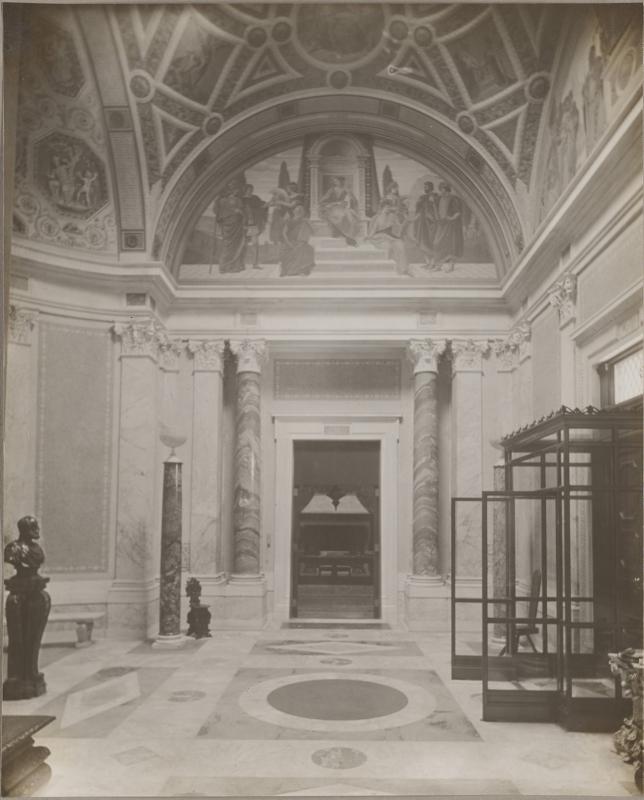Accessing the Collection

Rotunda of J. Pierpont Morgan's Library [photograph].New York, between 1905 and 1928
Erica Cialella, 2020–2022 Belle da Costa Greene Fellow: The Rotunda served as the point of entry for researchers and visitors hoping to access the library’s treasures. When the library was a private collection, prospective researchers and guests would make appointments in writing and after arrival slip a business card through the door to be approved for entry. If Morgan was out of town or traveling in Europe, the library was, in Greene’s words, “hermetically sealed.”
A visitor might wait here to be called into the West Room or North Room or be escorted into the east room to view collection materials. In 1928 the entrance to the building was shifted to the newly constructed Annex, designed by Benjamin Wistar Morris on the old site of J. P. Morgan’s brownstone home. The Annex was connected to the McKim, Mead, and White Library through a vaulted hallway called the cloister.
Once the Pierpont Morgan Library was established as a publicly accessible research institution, readers needed special cards to access the collection. Greene received hundreds of letters a week requesting such access. Researchers would be mailed a card for a specific date and present it upon entering the library. This system allowed Greene and fellow Morgan librarians to keep track of appointments and prepare research material, similar to the system in use today.